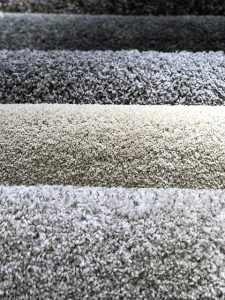Carpeting a concrete floor, or any other type of floor does not only make the room more inviting, it also helps to keep the room warm, and reduce noise penetration. The task is not as difficult as many of us think, and can be easily done with adequate planning, patience and with the required tools.
The following is a comprehensive guide on the steps to take when carpeting a concrete floor that will guarantee you the desired results.
 Choosing The Right Carpet
Choosing The Right Carpet
There are different types of carpet, all designed for a particular type of floor. Although all types of carpets can be fitted on different types of surfaces, settling for the idea material can be both cost-efficient and necessary. Carpets can be either Woolen, Nylon, Polypropylene Olefin, Acrylic or Polyester. The material used determines the quality, durability and overall cost of the carpet. For a commercial surface, for example, the ideal carpet should be high quality and able to withstand frequent washing, wear and tear. When choosing the ideal one, consider the frequency of washing, the type of environment i.e. domestic or commercial, the price according to your budget, and a pattern/color scheme that matches your preference.
Preparing The Concrete Floor and Room
The quality of preparation done on the concrete surface and room greatly determines how good the results of the entire project will be. Ensure that the surface is even and straight and that the moisture levels in the room are kept at a minimal. Less moisture in the room ensures that the carpet sits comfortably on the surface. Keep the room at a temperature range of between 65°F and 95°F (18°C and 35°C) two days prior to carpeting. Humidity levels should also be kept at between 10% and 65%.

Installing The Carpet
Place a tack strip or carpet gripper al around the room’s perimeter facing the wall and 1/2″ from the wall. Use masonry screws to attach the strips to the concrete floor and use it to tuck the carpet edges during the installation process. Alternatively, use glue-down carpet instead of carpet strips. With the carpet in place, cut paddings strips all around the room and apply glue to the corners and all around the strips. Pour an adhesive/glue around the perimeter of the room to hold the padding during installation. Ensure it covers the entire floor but not overlap it. The seams should be taped together with duct tape, and do not add adhesive anywhere else. Lay the carpet to fit the room and cut the excess strips using a straight edge and utility knife. Place seam tape under the carpet with the adhesive side facing up to bind the different pieces together. Using a seam iron, heat the parts and join them together. Using the tackless strips and a knee kicker, stretch the carpet out until it sits on the strips around all corners. Any excess carpet can be tucked behind the strips and install a baseboard to cover the gap around the room’s edges. Laying a carpet on your own can help in saving installation costs. It is however recommended to seek the services of carpet installers for ideal results.
Thank you for visiting our site. We hope that you are finding quality information that can help you. If you have any comments or questions, please contact us.
